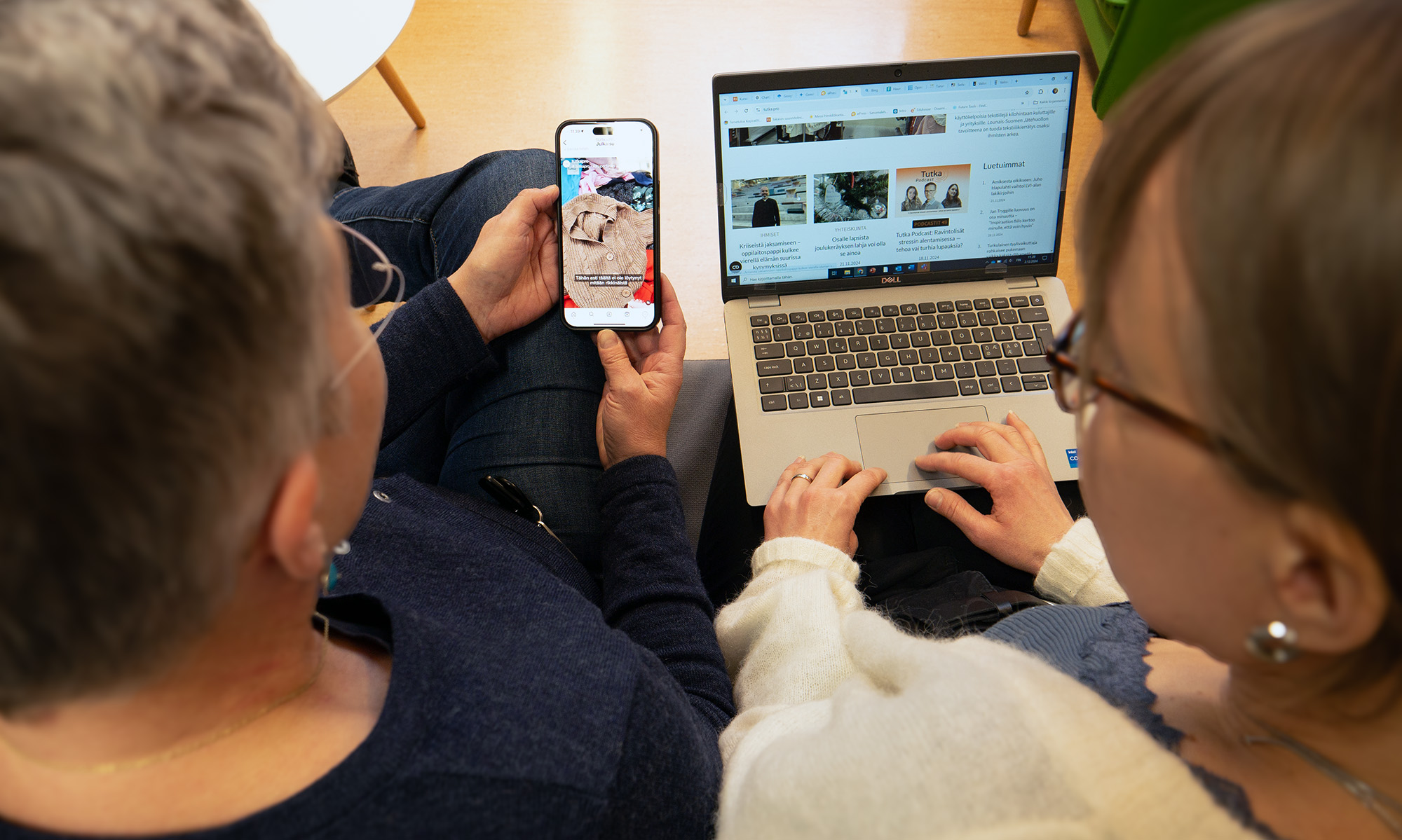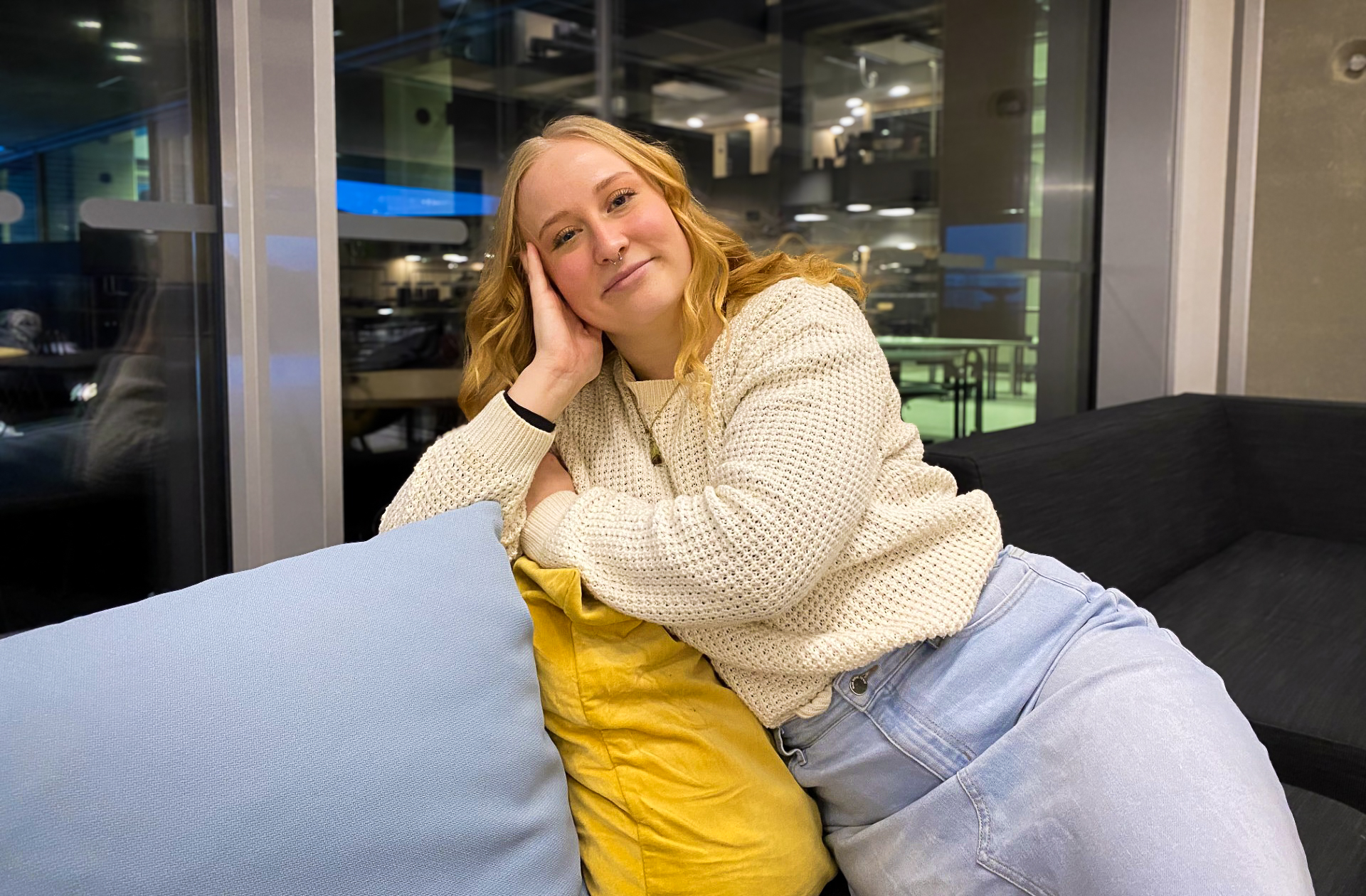The journalism students in Turku UAS have their own media called Tutka, which is also a learning environment. At Tutka, journalism students work as real journalists.

Julkaistu:
Muokattu:
Text and photo: Mari Loikkanen
What kind of news topic would interest students or young people? The editorial board of Tutka creates the most fun and interesting story topics, as journalism students get to practice editorial work as part of their studies. The target audience is clear: the topic must speak to a young audience.
− Students come up with ideas for their own topics. Independent work is a key part of learning at Tutka. The teacher’s task is to act as a coach in the background, says Johanna Ailio, lecturer in media.
In practice, this means that the students plan and implement their stories independently, while receiving support and tips from the teacher and the rest of the group. The aim is to make publishable high-quality news. A particularly successful story can be offered for publication in local media instead of Tutka.
− Students get to practice the skills needed in working life right from the first courses. For example, brainstorming one’s own story, creating perspectives and conducting interviews are basic journalistic skills for which teachers can provide guidance, encouragement and support, says Anna Kuusela, lecturer in journalism.
In addition to writing news articles, Tutka produces multimedia content: text, videos and audio. Audio journalism is practiced by producing, for example, podcasts.
− The podcast is contemporary. People use real-time media less and less, and at the same time, on-demand use is increasing, Ailio describes.
Editorial work earns study credits
Tutka’s own social media team publishes content on Instagram and Tiktok. This is also part of the studies, i.e. study credits can be collected for taking part in the activities.
Social media skills are increasingly important for journalists, as nowadays the audience can be reached especially from their mobile phones. Tutka’s social media accounts can be found under the name tutkapro.
− When creating social media videos, you learn especially how to perform for the camera, present, illustrate and for example, take accessibility into account, Johanna Ailio lists.
Stories submitted to social media channels are sent to the teacher for tutoring and approval before publication. Feedback is available from both the teacher and other group members.
Tutka is a member of the Council for Mass Media, which oversees media activities, and its articles are written in accordance with Journalist’s Guidelines.
Story samples help with job search
Anna Kuusela says that students are excited when they get to do real journalistic work. At the same time, students can collect story samples in their portfolios to demonstrate their skills when applying for internships and jobs.
− For a journalism student, publishing real stories is motivating. It’s wonderful to see that they exude such joy when they get to work, Kuusela says.
At Tutka, the students work as if in a real editorial office. There are editorial conferences, brainstorming sessions and managing editor shifts. When writing articles, you learn basic journalistic work: digging up the most essential part of the topic, building a functional news tip and a headline as well as versioning the same topic. You also need to know how to find suitable sources and take illustrations into account.
− I am always moved by good stories. Especially if you know that a student has had challenges finding interviewees for a long time and it eventually succeeds, you will be extremely happy even as a teacher, Ailio says.
Visit
-
Student

Journalism studies exceeded Ella Lipiäinen’s expectations
Ella Lipiäinen ended up studying journalism a little unexpectedly. The studies have proven to be practical, and they got right…
